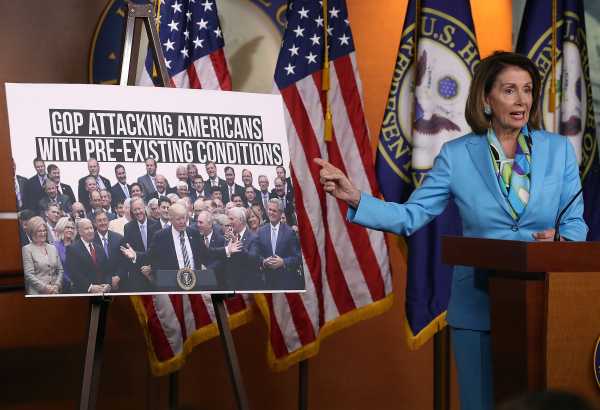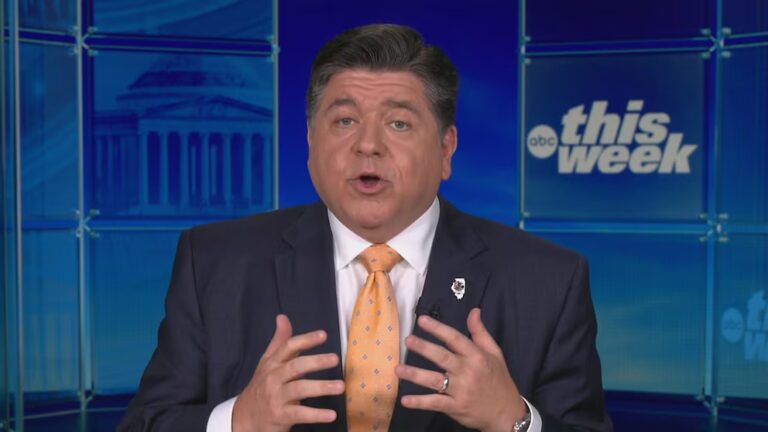
House Democrats are rolling out a plan to strengthen the Affordable Care Act that would expand federal insurance subsidies and reverse the Trump administration’s attacks on the health care law — but avoids the party’s internal fight about more ambitious proposals to extend health coverage.
Democrats released the bill the day after the Trump administration said it wanted the entire health care law thrown out by the courts, underscoring the striking divide between the two parties on an issue at the top of voters’ minds.
The new legislation sticks to policies that should win immediate support from the entire Democratic caucus. House Democrats are taking a slower approach on Medicare buy-ins and single-payer Medicare-for-all, soliciting information from the Congressional Budget Office and planning to hold hearings later this year. But these proposals, largely carried over from an earlier bill by Reps. Frank Pallone (D-NJ), Richard Neal (D-MA), and Bobby Scott (D-VA), were the ones they had ready to go.
“This is about very immediately answering the promises our members made in the campaign to lower health care costs,” a senior Democratic aide told me. “This isn’t the end of stuff we’re going to do on health care, in any regard.”
The Democratic bill is a smorgasbord of provisions to expand health care and undo the Trump administration’s regulatory actions to weaken the ACA:
- It expands the tax credits available under the law, both reducing costs for lower-income families and expanding eligibility so middle-class Americans can receive federal assistance.
- It creates a national reinsurance program to offset high medical bills for insurers and thereby keep premium increases in check.
- It rolls back Trump actions expanding skimpier health insurance plans, giving states the freedom to undermine the law’s benefits requirements, and cutting enrollment outreach funding.
Democrats will likely not pass the bill as a singular package, according to the senior aide, but wanted to give their members one bill that they could cite as evidence of fulfilling their campaign promises. Instead, they expect to try to pass individual provisions one at a time, in order to force Republicans to take multiple votes. Following the midterm campaign that proved health care is a winning issue for Democrats, they want to keep up the pressure on the GOP.
“It gives us multiple opportunities to sharpen the contrast with Republicans,” the aide said.
You could think of this bill as the lowest common denominator for House Democrats, the minimum they would propose to do to counter Trump and start expanding health coverage again.
The Democratic plan to strengthen Obamacare, briefly explained
In terms of actually providing health coverage to more people, the most important provision in the Democratic plan is the expansion of Obamacare’s premium tax credits. The bill both increases the subsidies for lower-income people who already qualify for aid and extends eligibility for federal assistance to people with higher incomes who are locked out currently.
Here is an example for the first group: Currently, people making 150 percent of the federal poverty level ($18,000 for an individual, $31,000 for a family of three) have to pay up to 4 percent of their income on health insurance purchased through Obamacare. Under the Democratic bill, they would pay no more than 2 percent. For a family making 300 percent of the poverty level, they currently have to pay 10 percent of income on premiums; they’d have to pay no more than 7 percent under the Democratic proposal.
But even more crucially, the Democratic proposal removes Obamacare’s existing limits on who is eligible for tax subsidies. Right now, people making more than 400 percent of the poverty level ($48,500 for one person, $83,000 for a family of three) don’t qualify for any federal assistance.
That population has borne the full brunt of premium increases in recent years. The number of people purchasing Obamacare-compliant coverage who don’t receive subsidies has shrunk dramatically — from nearly 7 million in 2016 to about 4 million in 2018 — suggesting that for many of those people, coverage has become unaffordable.
So the new legislation would make premium tax credits available to everyone, capping payments on insurance premiums at 8.5 percent of their income.
The rest of the bill is a string of more technical provisions: creating a national reinsurance program, fixing the so-called “family glitch” that barred some families from accessing tax subsidies, and, importantly, reversing the Trump administration’s regulatory agenda. The Democratic bill rolls back or otherwise curtails Trump’s expansion of short-term insurance plans not required to meet the ACA’s protections for preexisting conditions. It also requires the administration to spend federal money on enrollment outreach, after Trump officials cut that budget dramatically over the past two years.
The new bill, unlike its predecessor, does not restore the cost-sharing payments to health insurers that Trump cut off. In a quirky and wonky twist of fate, Trump’s decision to end those payments has actually led to many people receiving more robust federal aid. To offset the loss of the payments, insurers hiked premiums only on certain plans, the ones the feds used to calculate the size of people’s tax subsidy. That gave people a bigger tax subsidy, allowing them to afford better coverage for either the same cost or even less.
Rather than mess with that new reality, Democratic aides told me they decided to leave the cost-sharing payments alone in the updated legislation. If the Trump administration tries to block what states and health insurers have done to bolster the subsidies, then Democrats would look at passing a bill to restore the cost-sharing payments. But they aren’t worrying about it for now.
Democrats are taking their time on more ambitious health care plans
Notably missing from the Democratic bill is a public option or Medicare buy-in, the introduction of a government health care plan to compete with the private insurance offerings of the ACA’s marketplaces.
And, of course, some targeted provisions to bolster Obamacare are a far cry from the single-payer Medicare-for-all plan that is energizing the left these days.
House Speaker Nancy Pelosi has sounded skeptical notes about single-payer and urged Democrats to focus on strengthening Obamacare, their winning message in the midterms, so this new bill doesn’t come as a surprise. Leadership is taking a more deliberate approach to their party’s more ambitious health care ideas, where there is not yet a consensus within the ideologically diverse Democratic majority.
“This doesn’t displace a discussion about a public option, a Medicare buy-in, Medicare-for-all,” the senior Democratic aide told me.
House Democrats are planning to hold hearings on Medicare-for-all and these other ideas later this year. They have asked the Congressional Budget Office for a bunch of information about how those plans could be designed and how much they would cost.
The next two years will serve as an information-gathering exercise as Democrats debate how far they want to go in expanding health coverage to more Americans. In the meantime, they are laying out more targeted proposals to strengthen Obamacare and to beat back the Trump administration’s assault on the current health care law.
That was the core of the party’s message in the 2018 midterms, and that is where the consensus lies. “It’s more like near-term versus longer-term,” as the Democratic aide put it: Right now, Democrats are focusing on helping the ACA. Then they will turn their ideas to the next stage of health care reform.
Join the conversation
Are you interested in more discussions around health care policy? Join our Facebook community for conversation and updates.
Sourse: vox.com






